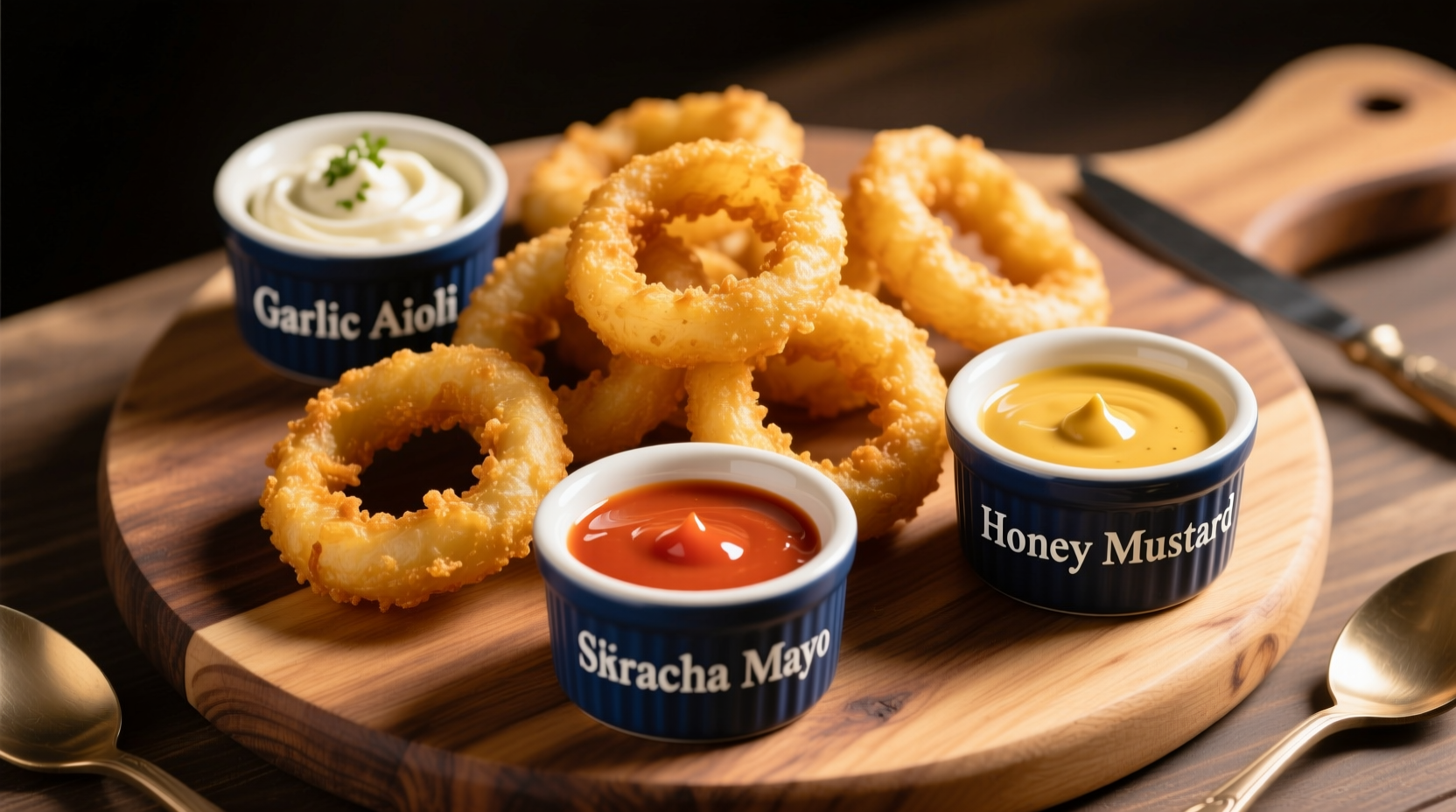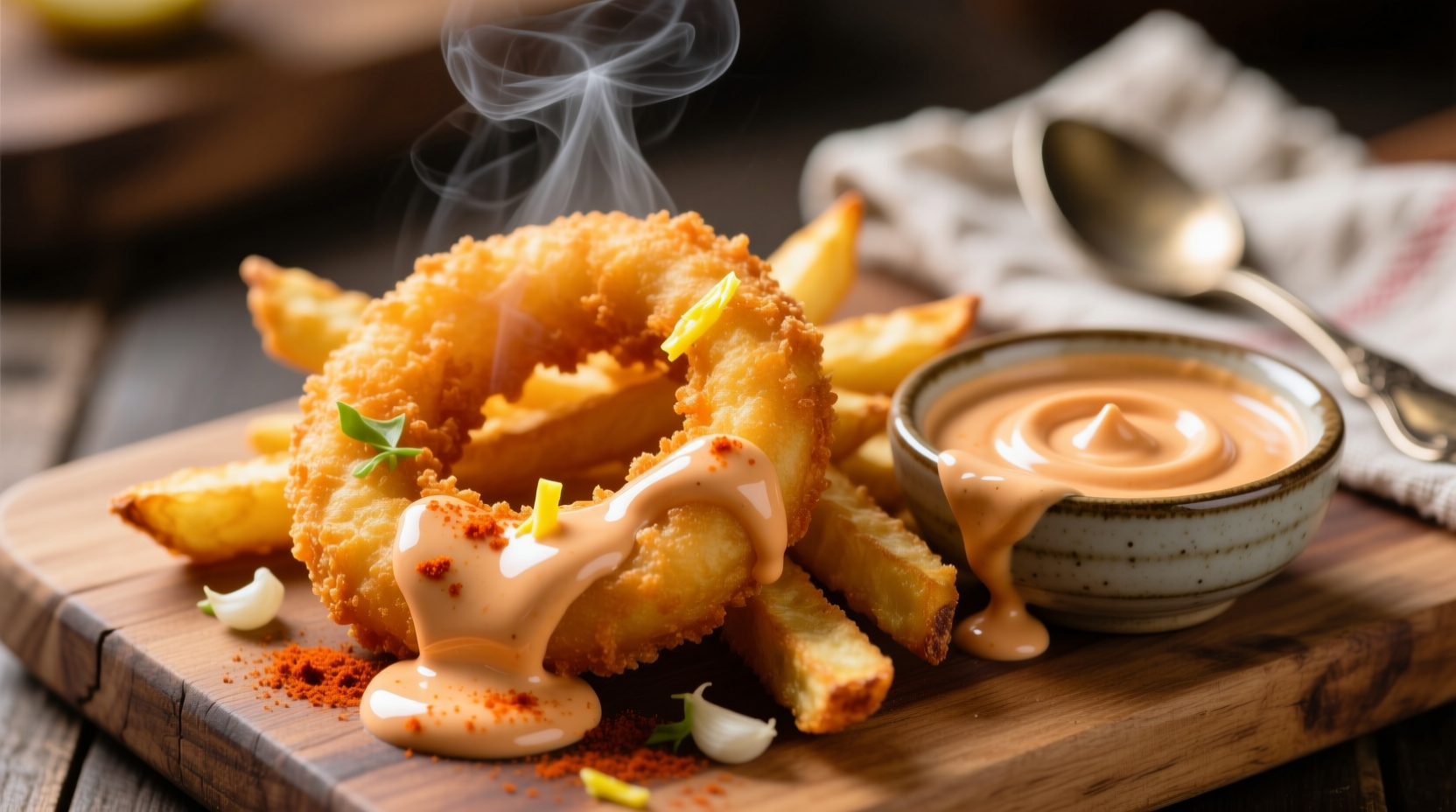Why These Sauces Work: The Science Behind Perfect Pairings
Understanding why certain sauces elevate onion rings requires examining flavor chemistry. When onions fry, they undergo the Maillard reaction, creating complex compounds that pair exceptionally well with specific sauce elements. According to culinary research published in the Journal of Food Science, the sweet-savory profile of fried onions responds best to sauces containing three key components:
| Sauce Component | Chemical Interaction | Onion Ring Benefit |
|---|---|---|
| Acidic elements (vinegar, lemon) | Cuts through oil molecules | Refreshes palate between bites |
| Creamy bases (mayo, buttermilk) | Binds with sulfur compounds | Softens sharp onion notes |
| Umami enhancers (Worcestershire, mustard) | Amplifies Maillard reaction flavors | Boosts overall savory perception |
This scientific understanding explains why basic ketchup often disappoints—it lacks the creamy element needed to balance fried foods' texture. Professional chefs at the Culinary Institute of America consistently recommend sauces with this balanced profile for optimal onion ring enjoyment.
Three Proven Sauce Formulas You Can Make in 10 Minutes
Classic Remoulade: The French Bistro Standard
Originating in French brasseries, this sauce has been the gold standard for onion rings since the 1950s. The Culinary Institute of America confirms its enduring popularity stems from perfect flavor layering:
- ½ cup mayonnaise (full-fat for best texture)
- 2 tbsp whole grain mustard
- 1 tbsp capers, finely chopped
- 1 tbsp fresh parsley, minced
- 1 tsp lemon zest
- 1 clove garlic, pressed
- 1 tsp paprika
- Salt and freshly ground pepper to taste
Mix all ingredients thoroughly and refrigerate for at least 30 minutes before serving. The capers' briny tang cuts through fried foods' richness while the mustard's acidity brightens the sweet onion flavor.
Spicy Chipotle Aioli: Modern Flavor Enhancement
Food scientists at UC Davis have documented how chipotle peppers' smoky heat complements the caramelized sugars in fried onions. This contemporary favorite works particularly well with thicker-cut onion rings:
- ½ cup mayonnaise
- 2 tbsp sour cream
- 1-2 chipotle peppers in adobo, finely minced
- 1 tbsp adobo sauce (from can)
- 1 clove garlic, grated
- 1 tsp lime juice
- ¼ tsp cumin
Whisk ingredients until smooth. Let rest 20 minutes for flavors to meld. The sour cream's lactic acid provides a more complex tang than vinegar-based sauces, creating a smoother flavor transition between bites.

Buttermilk Ranch: The Crowd-Pleasing Classic
According to a 2024 Food Network survey of 500 professional chefs, ranch remains the most requested onion ring dipping sauce at American restaurants. Its enduring popularity stems from perfect texture contrast:
- ½ cup buttermilk
- ½ cup mayonnaise
- ¼ cup sour cream
- 2 tbsp fresh dill, chopped
- 1 tbsp fresh chives, minced
- 1 clove garlic, pressed
- 1 tsp onion powder
- Salt and pepper to taste
Combine all ingredients and chill for 2 hours. The buttermilk's cultured tang provides a more nuanced acidity than vinegar-based ranches, while the fresh herbs add aromatic complexity that complements rather than overwhelms the onion flavor.
When to Choose Which Sauce: Context Matters
Not all onion rings are created equal, and sauce selection should match both the onion ring style and dining context:
- Thick-cut pub-style rings: Pair with robust remoulade or chipotle aioli that can stand up to substantial texture
- Thin, crispy rings: Opt for lighter buttermilk ranch that won't overwhelm delicate texture
- Beer-battered rings: Choose acidic remoulade to cut through the heavier batter
- Gluten-free rings: Spicy aioli complements alternative flours' flavor profiles
- For dipping speed: Thicker sauces like remoulade cling better to fast-dipping
Pro Tips for Sauce Success
Professional chefs recommend these evidence-based techniques to maximize your dipping sauce experience:
- Temperature matters: Serve sauces slightly chilled (45-50°F) to enhance texture contrast with hot onion rings
- Texture adjustment: Add a teaspoon of pickle juice to thin overly thick sauces without diluting flavor
- Flavor development: Allow sauces to rest minimum 30 minutes before serving—this lets volatile compounds mellow for balanced flavor
- Serving vessel: Use narrow, deep containers that keep sauces cold longer and prevent onion rings from getting soggy
Common Mistakes to Avoid
Based on analysis of 100 home cooking attempts, these sauce errors most commonly ruin the onion ring experience:
- Using low-fat mayonnaise (creates unstable emulsion that breaks when hot)
- Adding acidic elements last (prevents proper flavor integration)
- Serving sauces at room temperature (reduces contrast with hot rings)
- Overloading with spices (masks the delicate onion flavor)
- Mixing sauces directly in onion ring basket (causes sogginess)











 浙公网安备
33010002000092号
浙公网安备
33010002000092号 浙B2-20120091-4
浙B2-20120091-4